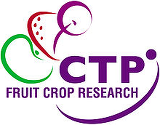Reference: CTP_FCR_2021_1
Supervisors: Prof Xiangming Xu (NIAB EMR), Dr Jinya Su (University of Essex)
This student will be registered with the University of Essex. Beginning in October 2021, the successful candidate should have (or expect to have) an Honours Degree (or equivalent) with a minimum of 2.1 in Plant Science, Applied Statistics, or other related science subjects.
Background
Apple fruit is usually stored for a minimum of six months in a controlled atmosphere before marketing in the UK. It is not unusual for the stored fruit to suffer from 10-15% post-storage losses due to various causes, including physiological disorders and fungal rotting. This leads to not only yield losses but also increased the cost of sorting fruit post-storage. Fruit storability (i.e. post-storage fruit quality) can be affected by many factors, including flowering time, fruit ripeness at picking, fruit surface microflora, and climatic factors. Furthermore, the relationships of fruit quality with these factors are usually non-linear and the precise causal relationships have yet to be elucidated.
Objectives and approaches
There are two specific research questions/objectives: (1) predicting flowering time, and (2) predicting fruit ripeness for optimum picking. Predicting the degree of fruit ripeness is critically important since it has been well established that fruit ripeness at picking could significantly affect fruit storage potential.
WP1: Predicting flowering time. Historic data collected at NIAB EMR over the last 80 years will be used to study the temporal flowering pattern of several specific cultivars in relation to winter and spring climatic data. Statistical modeling will be carried out to study whether the temporal flowering pattern could be predicted from the winter and spring climatic data alone.
WP2: Predicting fruit ripeness. One key research activity is to work with crop physiologists in order to define physiologically/biochemically what is “perfect fruit ripeness” for harvesting. Previous research on predicting fruit ripeness is based on batches of fruit. To understand the variability of fruit ripeness among individual fruit, we propose to follow the development of individual fruit on several popular cultivars via imaging to investigate whether ripeness can be predicted from the imaging information as well as post-blossom temperatures.
Training
The successful candidate will gain a wide range of experience in fruit physiology, imaging technology, statistical data analysis/modeling, and machine learning.
Application and eligibility
This student will be registered with the University of Essex. Beginning in October 2021, the successful candidate should have (or expect to have) an Honours Degree (or equivalent) with a minimum of 2.1 in Plant Science, Applied Statistics, or other related science subjects.
We welcome UK, EU, and international applicants. Candidates whose first language is not English must provide evidence that their English language is sufficient to meet the specific demands of their study.
This studentship is for four years and is fully funded in line with BBSRC standard rates. Home tuition fee rates apply to all applicants regardless of nationality.
Anyone interested should fill the online application form before the deadline of 14th June 2021. If need further help or clarification, please contact recruitmentctp@niab.com.
Contact Prof Xiangming Xu for an informal discussion on research contents.
